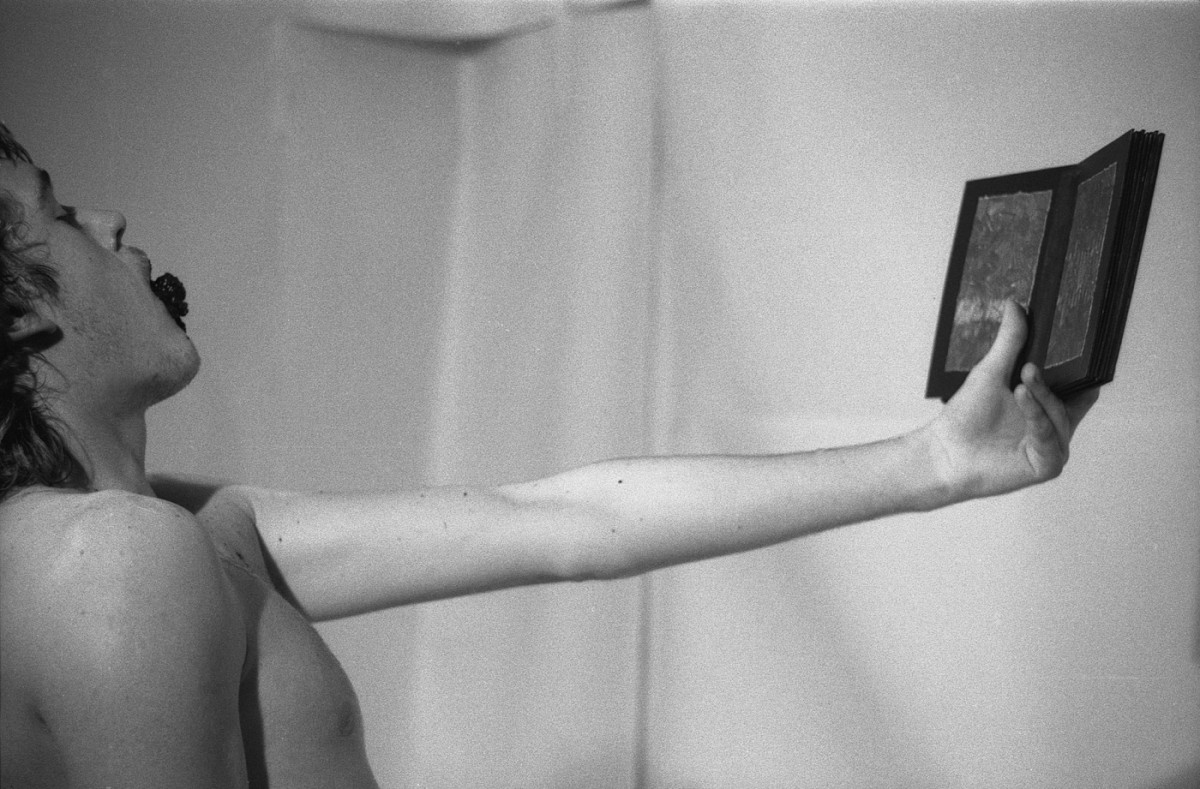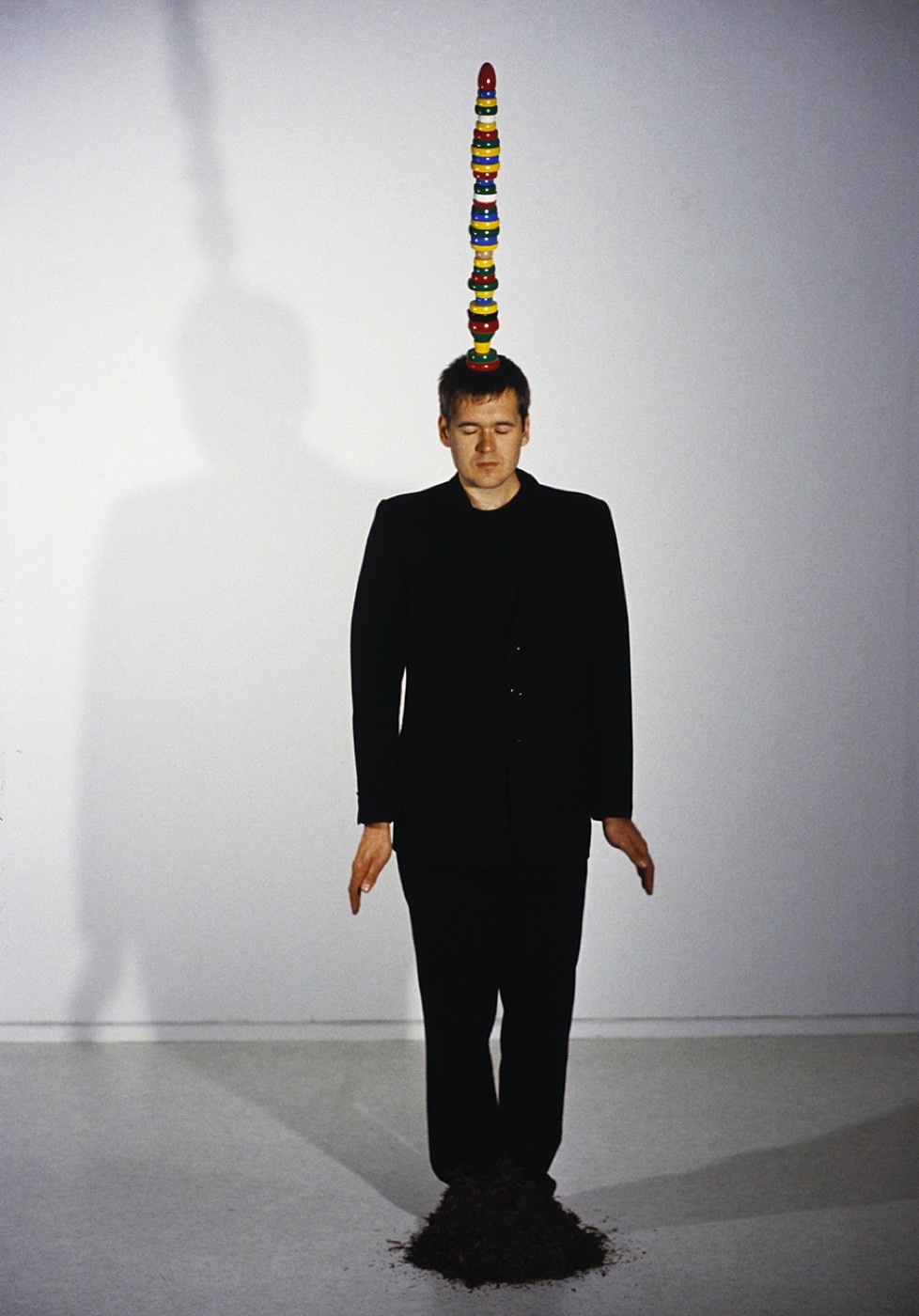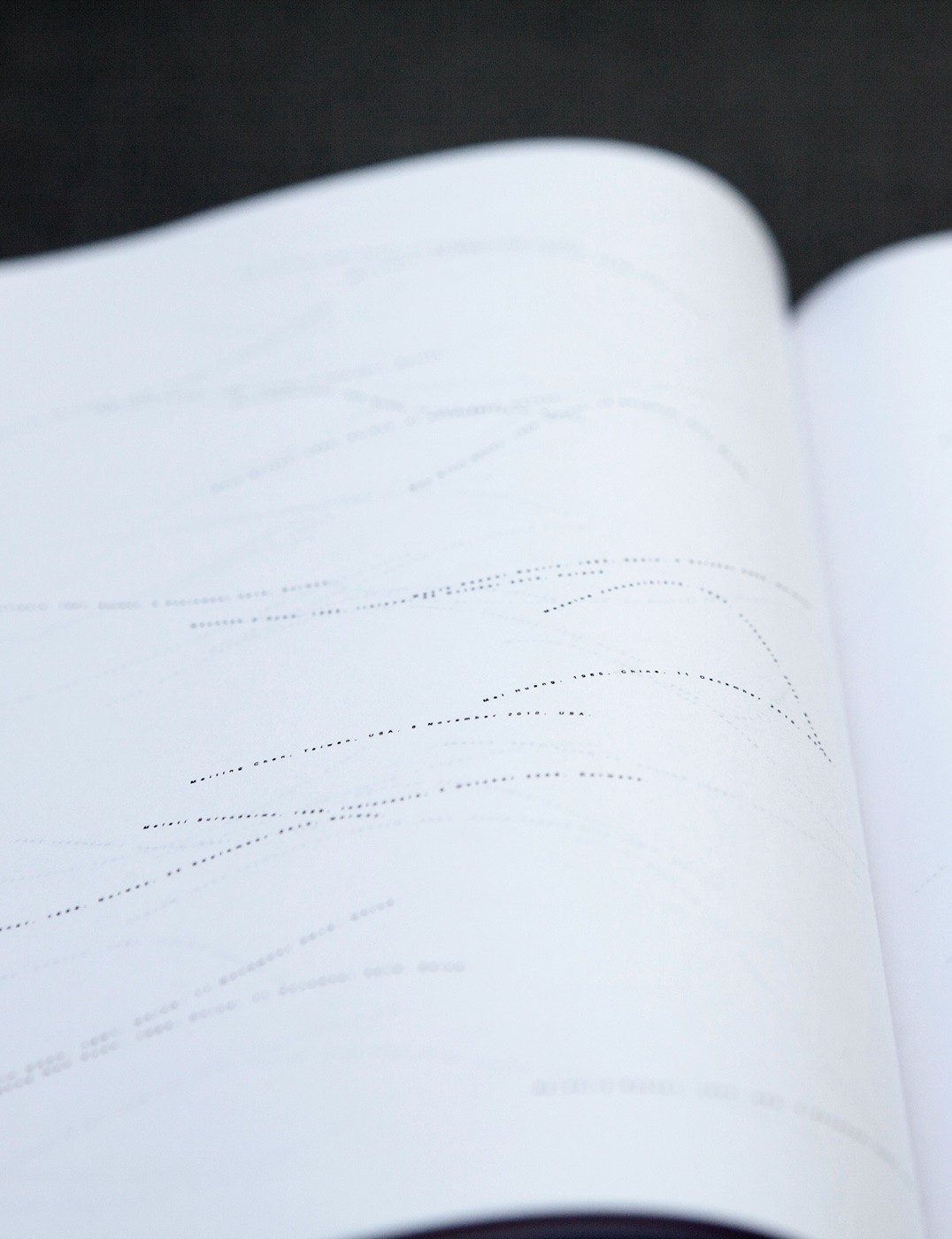The writing Body
Through more than thirty years of performances and exhibitions, and what is soon to be one hundred and one publications, Kurt Johannessen has worked on and talked about subjects ranging from nature and culture, to the beginning of life itself. Often through minimalist and time-consuming performances and publications (both visual and written), Johannessen keeps us spellbound through his actions and words. In our conversation on the connection between his performances and publications, we touched upon subjects as varied as climate, football, literature and artistic actions.

Marius Moldvær: Could you say something about the connection between your two practices, performance and bookmaking, and how they have informed each other over the years?
Kurt Johannessen: I started out doing performances because I realized that it was the process of making art that I found the most interesting. After doing drawing and sculptures in the eighties, I decided that I wanted to work directly with the process itself and the actions connected to it. When you make any other work, there is an action that results in, for example, a sculpture – then, you open an exhibition and that becomes the result of that action. But when you do a performance, you are in direct dialog with the people watching the performance instead of the action being mediated through an object. Later I realized that my interest in soccer has guided me towards performance, because in many ways soccer and performance are very similar.
MM: That is an interesting and unusual pathway to performance.
KJ: Well, both things are about presence, both physically and mentally in a specific situation. Also, when you are playing soccer, that action is very similar to the feeling of doing a performance. I started making books in 1983 when I made a handmade book for a performance. I read out loud from the book while my mouth was filled with soil, and then I made a catalogue containing documentations of performances. After that, I spent the winter of 1984 in Iceland where a lot of artists were making books and working with different kinds of publications as their primary medium and mode of expression. The whole experience in Iceland was very inspiring and having already begun to think about making books, I was able to make and print my first artist book there. The following year I began making books mainly with text, which has made up most of my publications so far.
MM: In your publications text seems to be in the center of your production.
KJ: With my books you could say that I work purely visual, purely text based, or a mixture of both.

MM: And after your stay in Iceland you started your own publishing house that borrows its name from your performance Zeth (1993) and the publication Zeth(1996). And in both the publication and the performance, the starting points are ants and they go on into a kind of meditative repetition. Could you say something about why you chose to start your own publishing house, the choice of the name Zeth, and the connection to the performance?
KJ: I was making books at that point without a publisher or a publishing house. So then I thought I could make it a publishing house, to be able to produce books with ISBN numbers. Zeth was a very important performance for me; in it I am standing in an ant hill with a structure on my head made up of circular stacking tower rings made by Brio. So I am standing in nature with this man made construction on my head. To be human is in some ways to be right between nature and culture, or, one has both nature and culture within. This has become one of the main focuses within my work.
MM: This meeting of culture and nature is then similar to when you were reading the book with your mouth filled with soil.
KJ: Yes, and many of my performances following that concern themselves with just nature. On a whole that theme has become my project: I still work a lot with soil, rocks, sticks, and water. And I think it’s important to recognize that being human is both nature and culture. It is even more important now, in relation to the climate crisis, that we recognize ourselves as a part of nature, not separate from it. Our culture has, in many ways, distanced us from nature; through capitalism and even religion we have begun to see nature as something that belongs to us, something we place ourselves above, something that we can exploit.
MM: And in that manner, your performance Zeth is still very relevant today
KJ: Yes, our culture and how we communicate with nature / that which surrounds us will be relevant as long as humans exist. As an artist I have the possibility to retell and ask questions in a different way than, for example, scientists or politicians. Artists can propose a different way to encounter the world in.
MM: And your book Øvingar / Exercises (1994) especially embodies the performative aspect.
KJ: When I first wrote, I was thinking that I could do all those actions. But then I changed my mind and decided to do none and instead leave it up to the reader to perform them. And many of the people who have read it have also done the exercises, and to experience through action is a good thing.
MM: These actions were also accepted by people without there being an end goal or definitive point to them.
KJ: Yes, that’s right. You won’t become a great soccer player or learn to play the clarinet; it’s more about a different way of thinking, of seeing things in a different light!
MM: In your work is it so that text can become a performance and performance can become a text? That it has this vice versa effect?
KJ: It has happened, and still does. I have done some performances that have become texts and probably the other way around too, without being able to remember if it was intentional, but yes: it has had that two-way effect.

MM: Also, something that I have noticed when holding your books is the size一because they are quite small, especially the book Øvingar / Exercises.
KJ: They are, in a manner of speaking, small things or objects. Especially with Øvingar / Exercises, I wanted to make it so small so that you could carry it with you and have it in your hand if the situation arises and you want to do one of the exercises. It’s a book you can travel with, and throughout my whole career my focus has been on the smaller and more fragile objects and actions. I do more on the level of seeds and flies, as opposed to the megaphone.
MM: I like how this is reflected in your books. And since you have this control over how they are made and presented, it makes it almost performative.
KJ: I am concerned with making books where the whole of the book, from the size, the cover, and the format, communicates the content of the book. Since I publish my books through my own publishing house, those are choices and decisions that I can make freely. For example: I never have my name on the cover, so that the focus is on what’s inside the book rather than on me as a person.
MM: Do you feel that this is different from your performances; that you can in some way hide yourself when presenting a book?
KJ: It becomes more about the work when it is not evident, or all that important, that it is I that have made it. An artist book is a small work: in that work, the story it tells is the most important. Books are often placed out into the world as commercial objects一it should have a cover that in some sense lures the buyer in, feeds on his need to buy this book. But in my own work, it’s important that the cover tells you something about what’s inside, not only that you want to buy it because it has a beautiful cover.
MM: Talking about the market, do you feel that there is a difference in making artists’ books now as opposed to before? Now, you have all these art book fairs and other venues to show and sell artist books, so there is another kind of availability in a way.
KJ: It’s become more popular indeed, and the art book fairs are really great when it comes to putting the focus on, and the availability of artists’ books. One of the great things when making books is that you can make an artwork that anyone can access; there is this great democratic idea behind that way of making. Similar to performances, books are a way of communicating that doesn’t really demand anything from the viewer; you don’t have to be super rich to read or buy a book or see a performance, and I think it’s great that both these modes of art making have become more popular. This means that more and more artists are finding these new spaces and practices outside the commercial art world.
MM: Do you think that it’s this democratic idea inherent in both art forms that attracts you to them?
KJ: In the way that they have that potential, yes. They exist outside of the more commercial part of the art world, and this gives a certain amount of freedom. I’ve always thought that if you make a book and you don’t sell any copies, that’s fine. Another artist told me once: to be an artist is comprised of two different projects, making art and getting the money to make art. It’s important to separate those two. Of course it’s great to sell work and that people want to buy them; it makes both projects less strenuous. But money shouldn’t be the main goal, finding your own artistic action within the world should be: then you will find out where in that world those actions will take you.